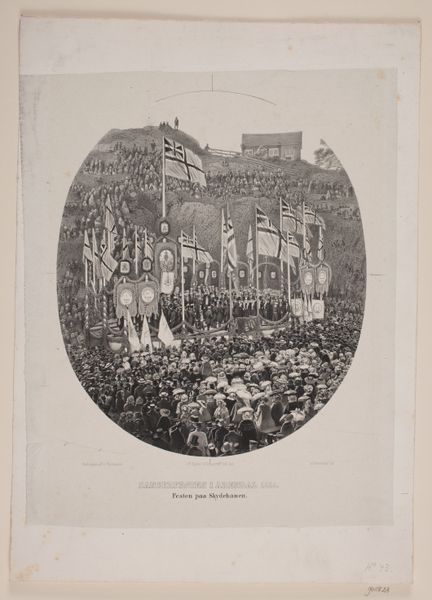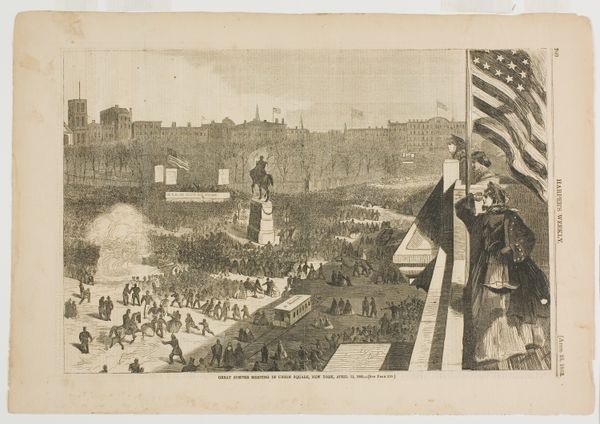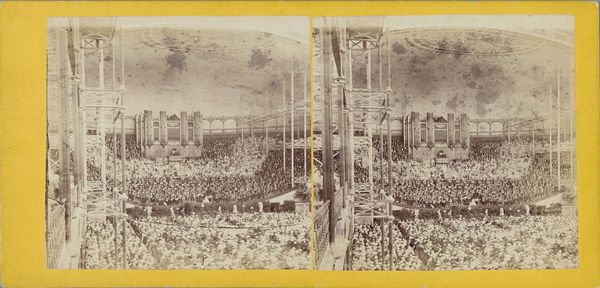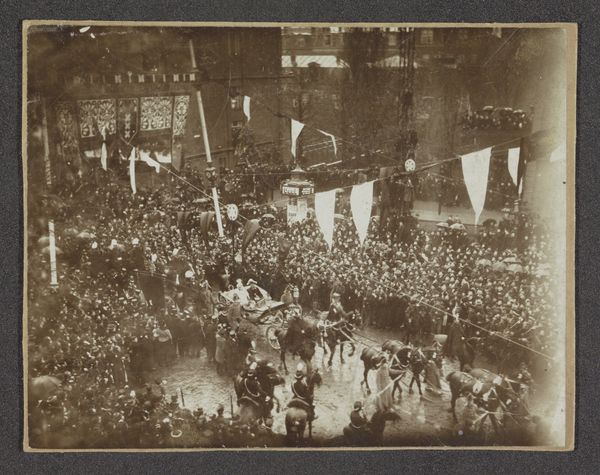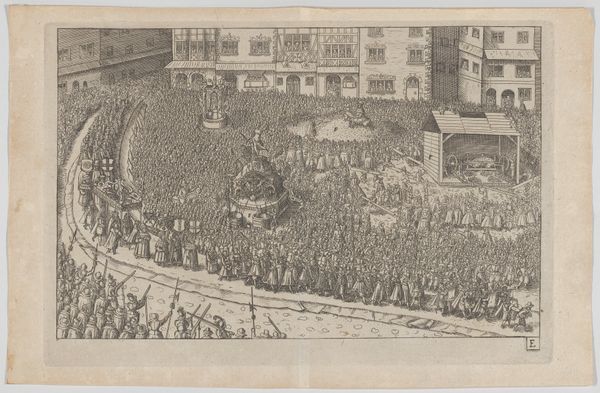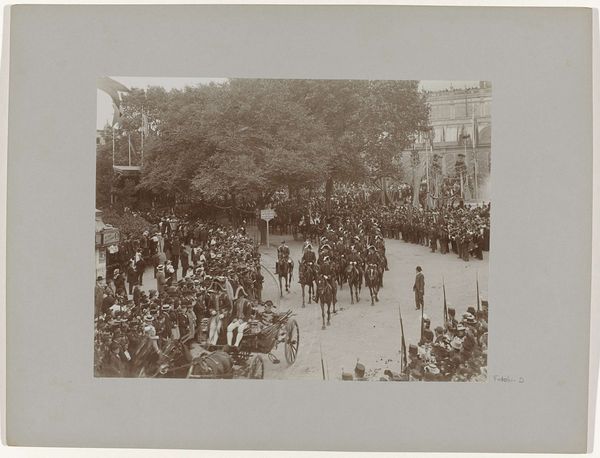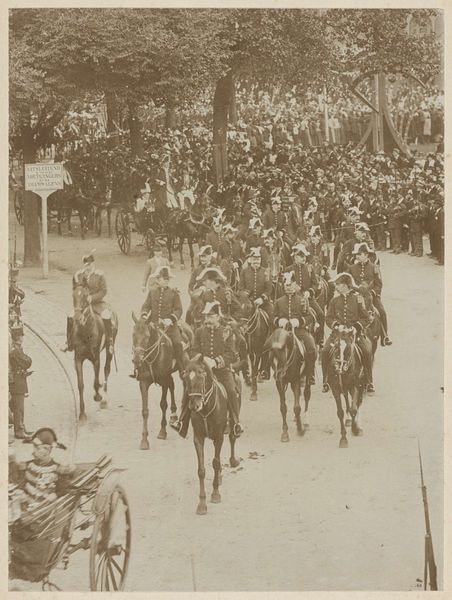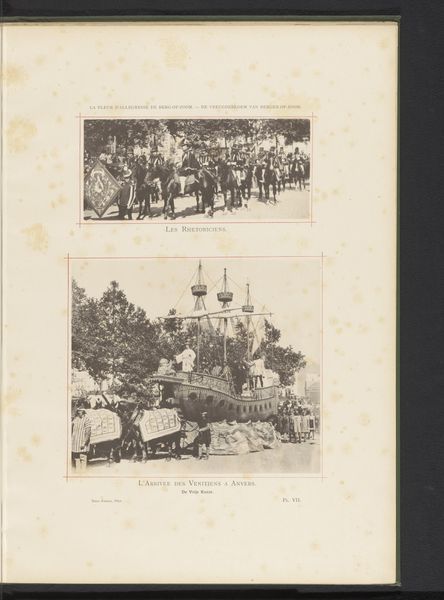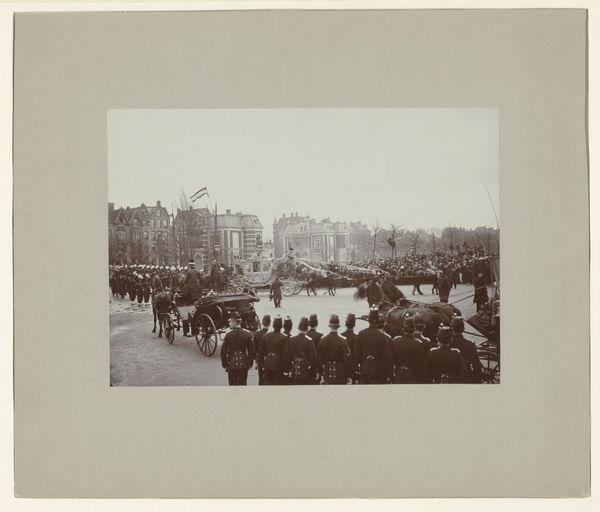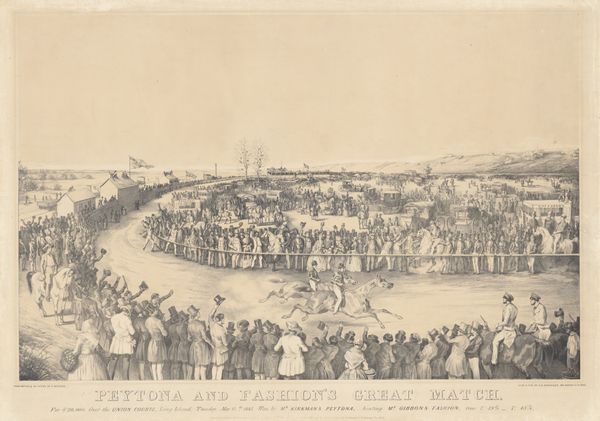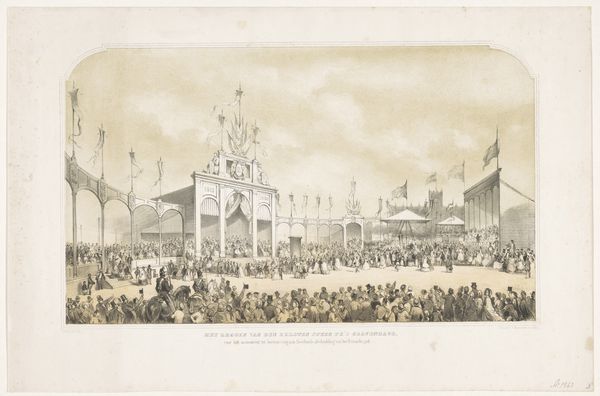
Koningin Wilhelmina en koningin Emma stappen uit de koets voor de eerste steenlegging van het Wilhelmina gasthuis in Amsterdam 1891
0:00
0:00
henridelouw
Rijksmuseum
photography, gelatin-silver-print
#
portrait
#
photography
#
gelatin-silver-print
#
cityscape
#
history-painting
#
realism
Dimensions: height 260 mm, width 212 mm, height 260 mm, width 212 mm
Copyright: Rijks Museum: Open Domain
Editor: This gelatin-silver print, taken in 1891 by Henri de Louw, depicts Queen Wilhelmina and Queen Emma arriving for the cornerstone laying of the Wilhelmina Hospital in Amsterdam. It feels very staged but it tries to represent an important social event. What can you tell me about it? Curator: Let's consider this photograph in terms of production. What kind of labour and expense was involved in staging this photograph of a public event, and producing gelatin-silver prints at this time? These processes were emerging, and involved skilled workers and industrialists and consumers. What relationship can we deduce between technology, power, and public events at the close of the nineteenth century? Editor: I suppose the making of this photograph was much more of a technological investment. Unlike, say, painting. There's also the material components – the silver, the gelatin, and all the industrial processes needed to bring those elements together. It wasn't an easy process at all. Curator: Exactly. Consider also how the image itself, a material object circulated and consumed by the public, reinforces the power structures evident in the scene. It portrays a specific event in a carefully framed manner, subtly influencing public perception. Do you think the medium – photography itself – might lend a sense of truth to the representation? Editor: That's a good point. Because it's a photograph, we assume it's a more "realistic" view, even if it's staged. So, in a way, the material quality of the gelatin-silver print contributes to its message. I'm starting to see that materials can say a lot more than you expect. Curator: Indeed. And it highlights how choices regarding the means of production shape meaning. The art itself is evidence of its making.
Comments
No comments
Be the first to comment and join the conversation on the ultimate creative platform.
